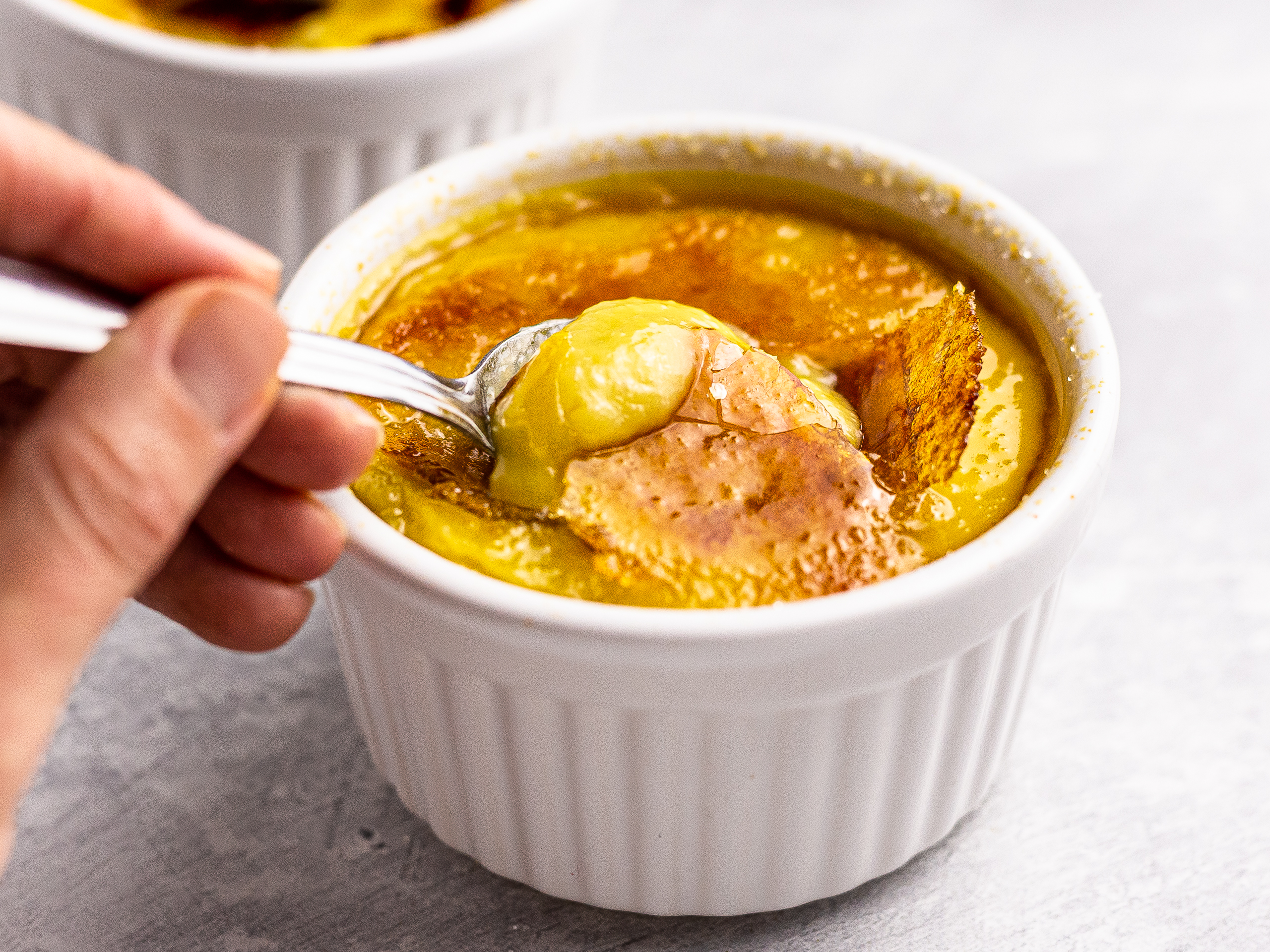The crème brûlée is a traditional French dessert made with eggs, double-cream, and sugar, topped with a layer of caramelised sugar. It's an absolute blast of flavour but not at all healthy and with lots of food allergens. Our no-bake vegan mango crème brûlée is a healthier variation of the classic we all love. We kept all the indulgence but replaced bad fats and allergens with a healthy mango puree and coconut milk, making this recipe dairy-free, egg-free, gluten-free, and vegan.
And what makes it even better is that it doesn’t require baking in the oven. You'll only have to cook it for a few minutes over the hob to thicken up the mango-based cream, then straight in the fridge and into your belly.
Also, there are no added sugars to the cream base as it’s already naturally sweet thanks to the mango puree. This helps to reduce your intake of added sugars, for a healthier dessert.
Because there are no eggs, it is the mango that gives that nice yellow colour to the cream. If you prefer an even deeper tone, just add a pinch of turmeric to the cream base before blending the ingredients.
Long story short, our mango crème brûlée truly is a delicious treat everyone can enjoy, thanks to a healthier selection of ingredients. But don't take our word for it! Learn how to make it at home following our step-by-step recipe below.
Do you serve creme brulée hot or cold?
Traditionally, you serve the creme brulée right after having caramelized the top sugar layer. The custard base will be cold, as it has been refrigerated for at least one hour to harden, while the top caramel layer will be slightly warm. This combination of cold and warmth gives this dessert a unique and delightful feel.
Can I make this mango custard in advance?
Absolutely. You can prepare the coconut milk and mango custard base ahead, like the night before. Then, pour it into the ramekins and keep them in the fridge wrapped in cling film. When you're ready to serve the creme bruléè, sprinkle the surface with sugar and caramelize it with a blow torch or under the hot grill in the oven.
We don't recommend storing away the creme brulée after you have made the hard caramel layer. That is because the caramel will get soggier and soggier the longer it stays in contact with the custard base.
How is the classic French creme brulée made?
The traditional creme brulée recipe consists of a base of custard cream then topped with a layer of caramelized sugar. The custard is prepared by tempering egg yolks and sugar with hot cream. The mixture is then poured into ramekins and baked in a bain-marie.
The classic dessert includes eggs and heavy cream. Thus it isn't suitable to vegans or those suffering from lactose-intolerance or egg allergy. Our recipe, instead, is prepared with just mango, coconut milk, and potato starch, and it's safe for everyone to enjoy.
Which type of sugar should I use for creme brulée?
The best type of sugar of creme brulée is caster sugar, also known as superfine or ultrafine baking sugar. It's essentially granulated sugar that has been ground into very small crystals, and this way, it melts much faster than the classic sugar.
Therefore, we recommend using caster sugar to get that perfect caramel layer in your creme brulée. If the sugar you use is too coarse, instead, you might end up with patches of undercooked or even burnt caramel.
Other alternatives to white sugar include demerara brown sugar, coconut sugar or natural sweeteners like erythritol or stevia.
We experimented with all of them, and we found that:
Brown sugar does caramelize. Still, it turns very dark, and therefore it isn't always easy to know if it's burnt or not.
With erythritol, we noticed that it melts and hardens under the blow torch, but it doesn't turn brown.
Coconut sugar is a great option and behaves similarly to brown sugar.
Can you make creme brulee without eggs?
Yes, you can. Eggs provide structure, colour, and richness to the custard. You can achieve the same results with plant-based ingredients, such as coconut milk, starches, and silken tofu.
In our recipe, we relied on the thickening properties of starch and on the creaminess of coconut milk to make our creme brulée vegan and thus egg-free. You can use potato, corn, or arrowroot starch, according to preference.
Another alternative is silken tofu. This soft and light soy product blends into a super smooth cream, and thanks to its high-protein content, it gives structure to the custard. We have used it in many of our vegan desserts, like this matcha flan or coffee creme caramel.
Ingredients
| Peeled Ripe Mango | 180 g |
| Coconut Milk (canned) | 200 g |
| Potato Starch | 40 g |
| Water | 50 mL |
| Caster Sugar | 1 tbsp |
Step 1
Peel and cut the mango into chunks big enough to fit into your blender.
Keep the coconut milk can in the fridge for at least 30 minutes. Then, open it and, without tilting it, scoop out just the top cream layer and discard the water (or use it as a tasty base for your next smoothie!).
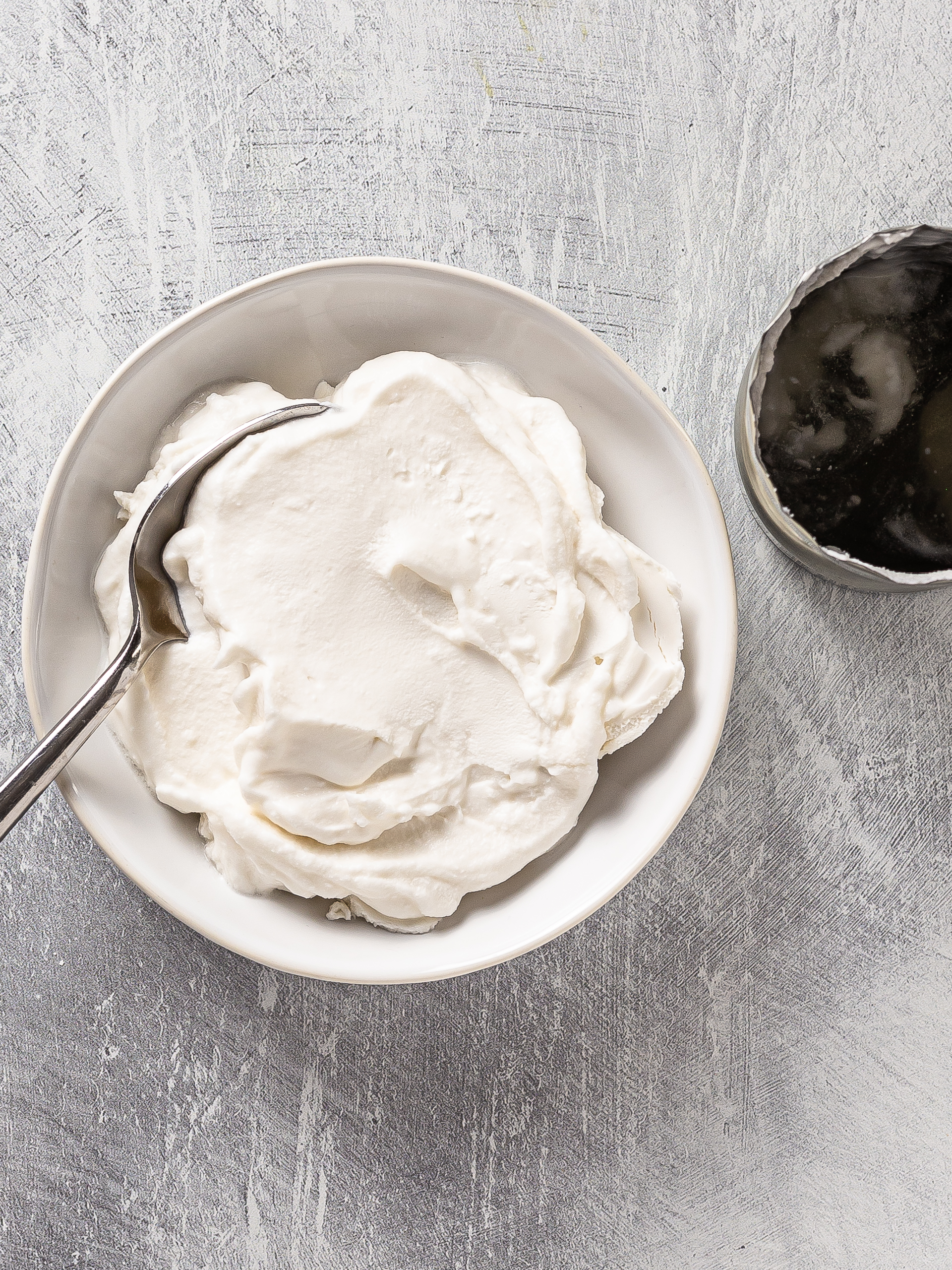
Step 2
Now, let's move onto the starch, which you'll use it as a thickener to replace the eggs.
In a small bowl, combine sifted potato starch with the given water.
Whisk well until the starch has dissolved and you have a white liquid.
The starch tends to sediment at the bottom of the bowl, so give it a quick stir before adding it to the other ingredients in the next steps.
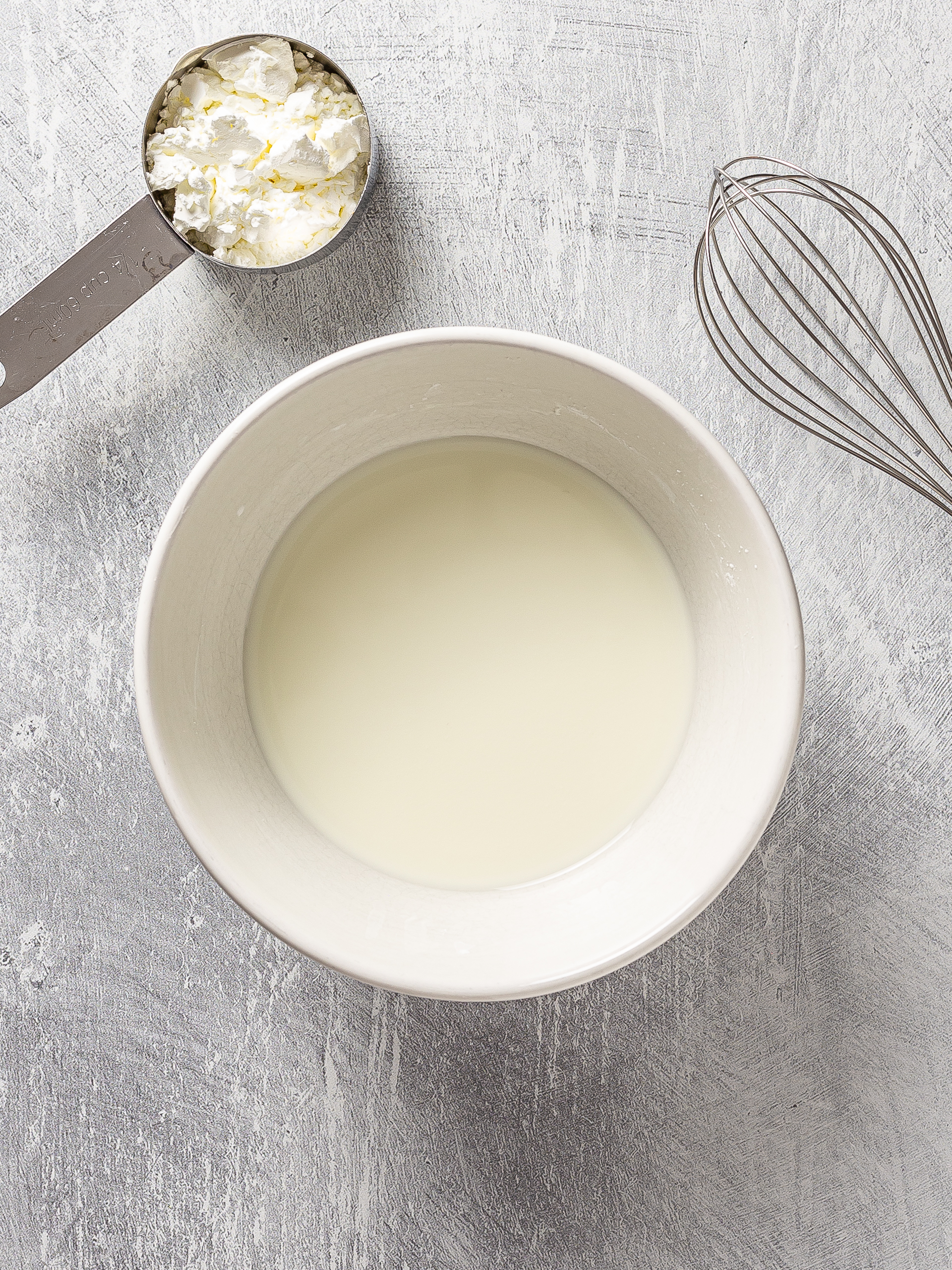
Step 3
Add the starch mixture, coconut milk, and chopped mango to a food processor. Then, blitz all until you have a smooth cream.
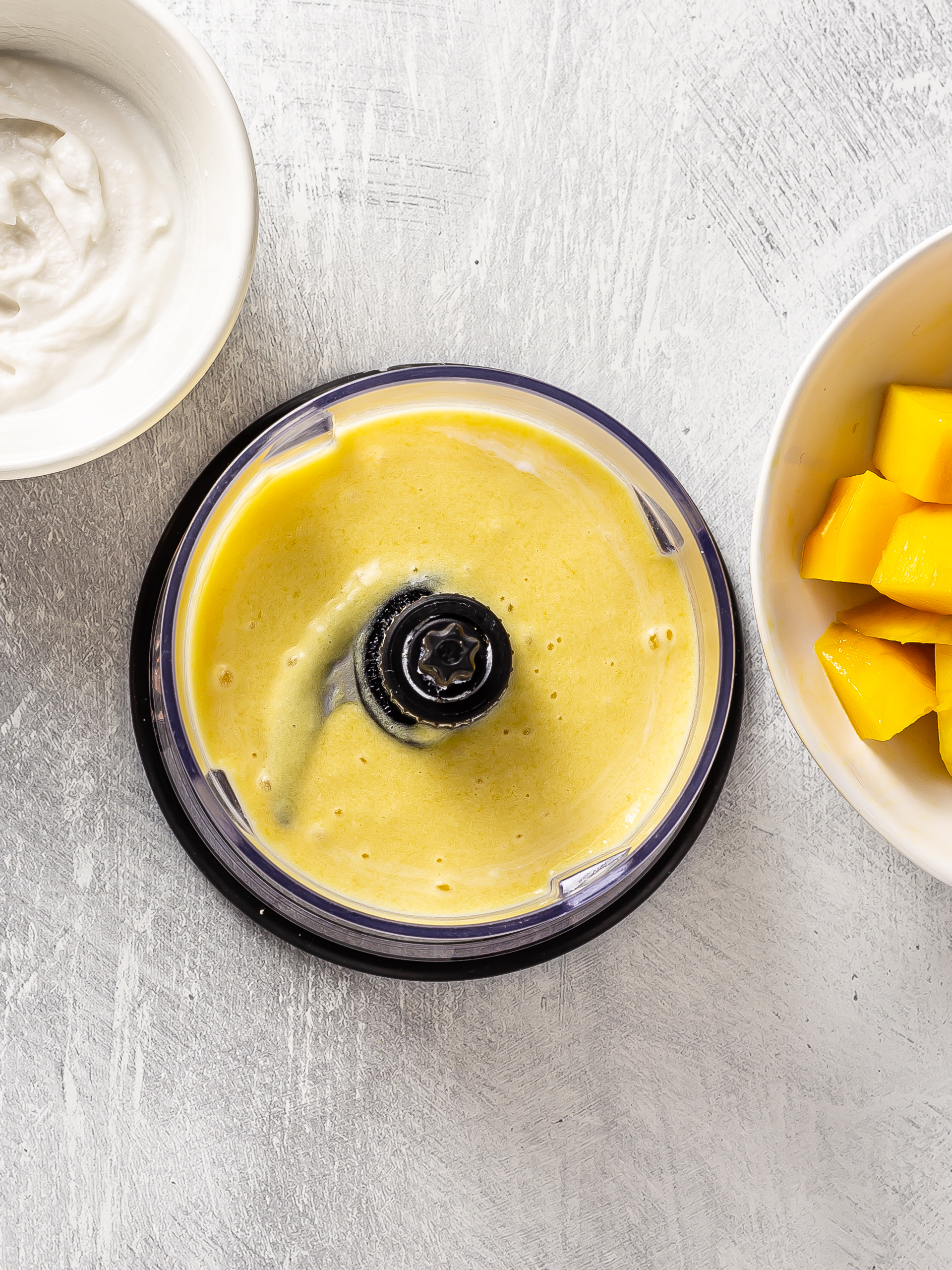
Step 4
Now, pour the mango cream into a pan and turn on the heat to medium-high.
Allow the liquid to reach the boiling point while always whisking.
As soon as you see the first bubbles forming, turn off the heat and continue to stir as the cream cooks and thickens with the heat of the pan.
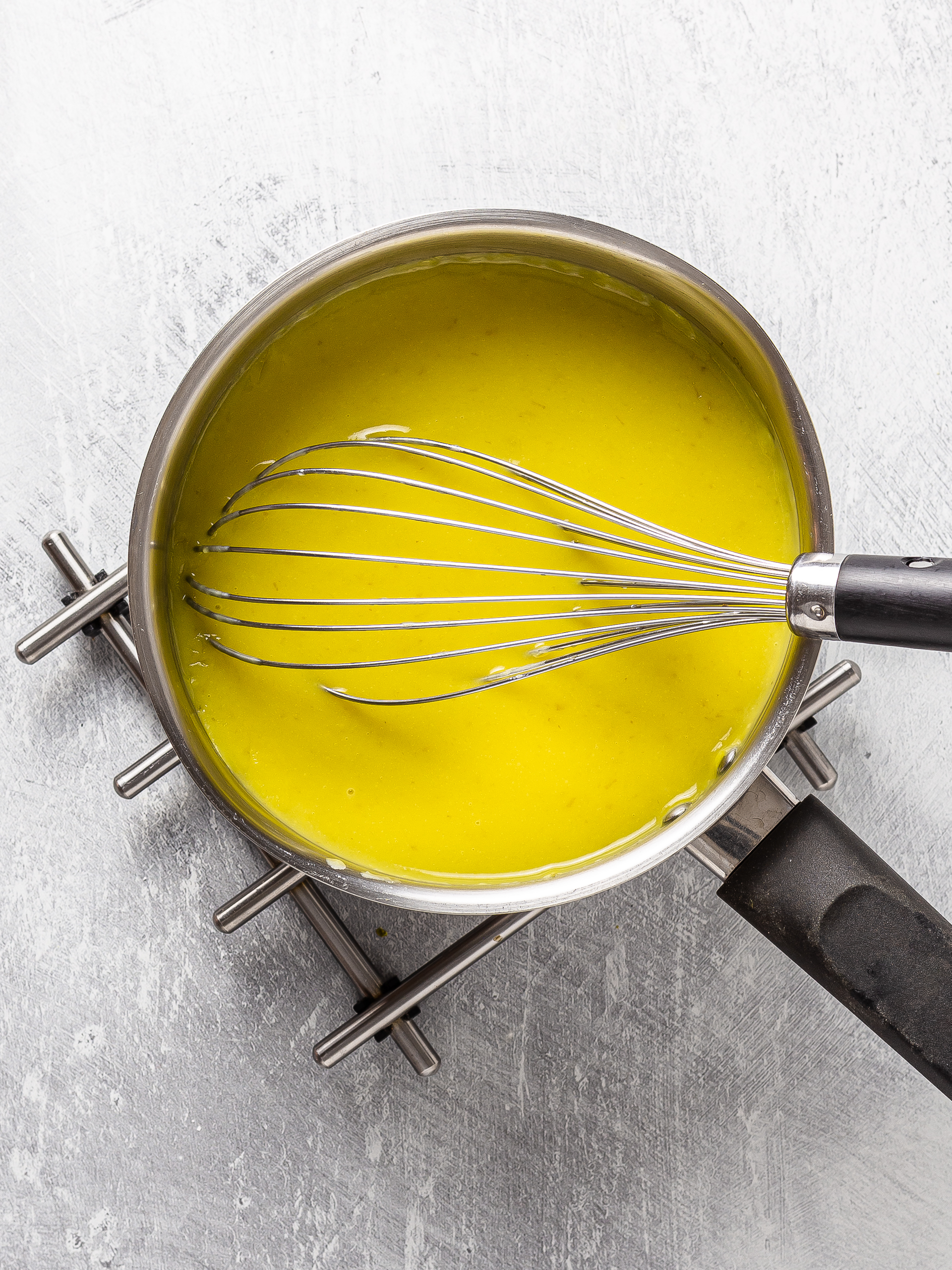
Step 5
Next, pour the hot mango custard into each single-serving ramekin, filling it almost to the top.
Then, place the prepared ramekins in the fridge for one hour to cool down and harden.
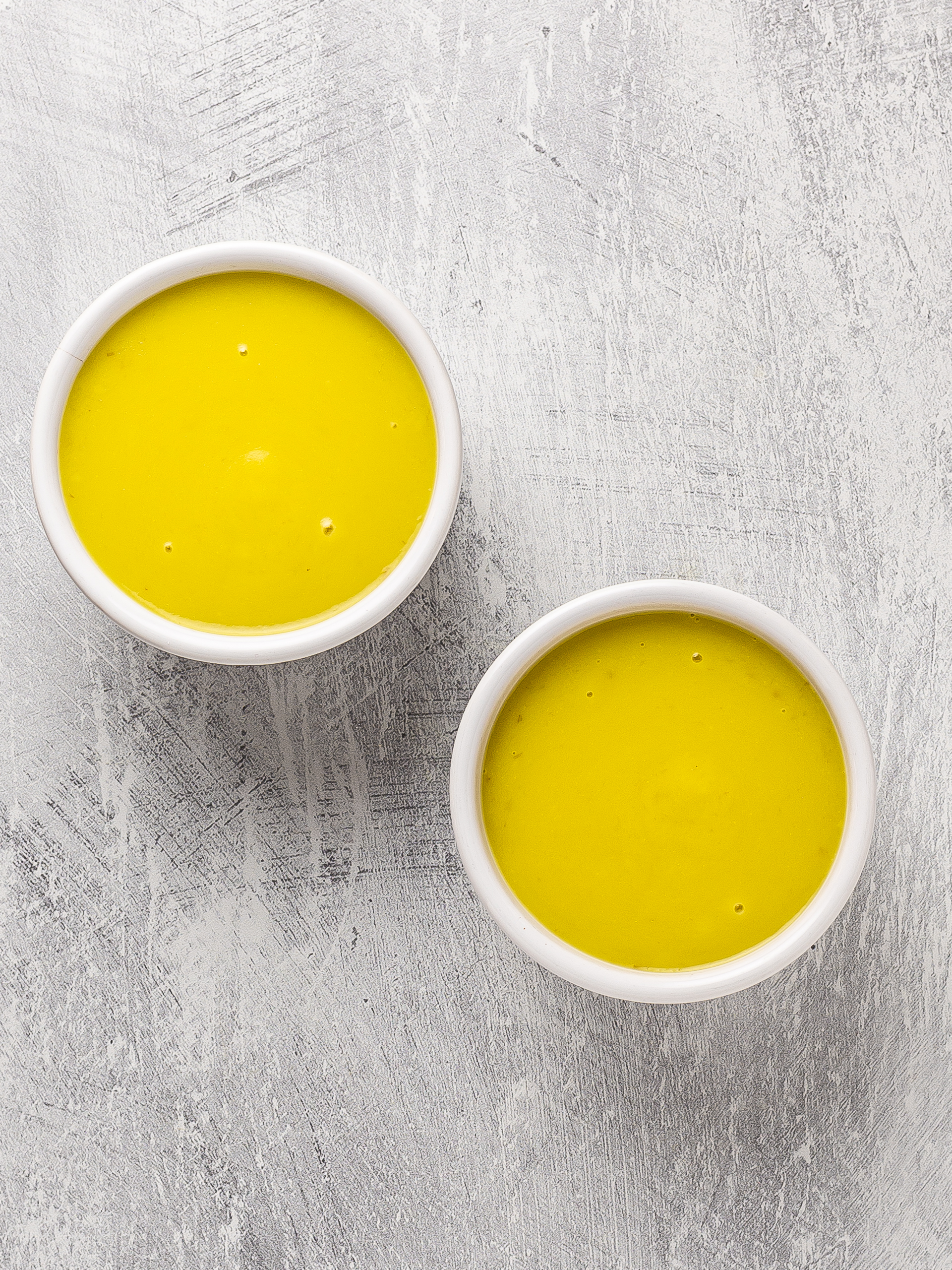
Step 6
Once the cream is firm, it's time to turn it into a perfect crème brûlée.
Sprinkle the sugar over each ramekin and spread it out with your fingertips to cover the cream completely.
Now, use a blow torch to caramelize the sugar, holding the flame just above it, until it turns brown.
Alternatively, place the ramekins in the oven with the grill function at high heat and broil them for one minute or until the sugar layer gets browned.
Your tasty crème brûlée is ready, crack the caramel into shards with a teaspoon and dip in!
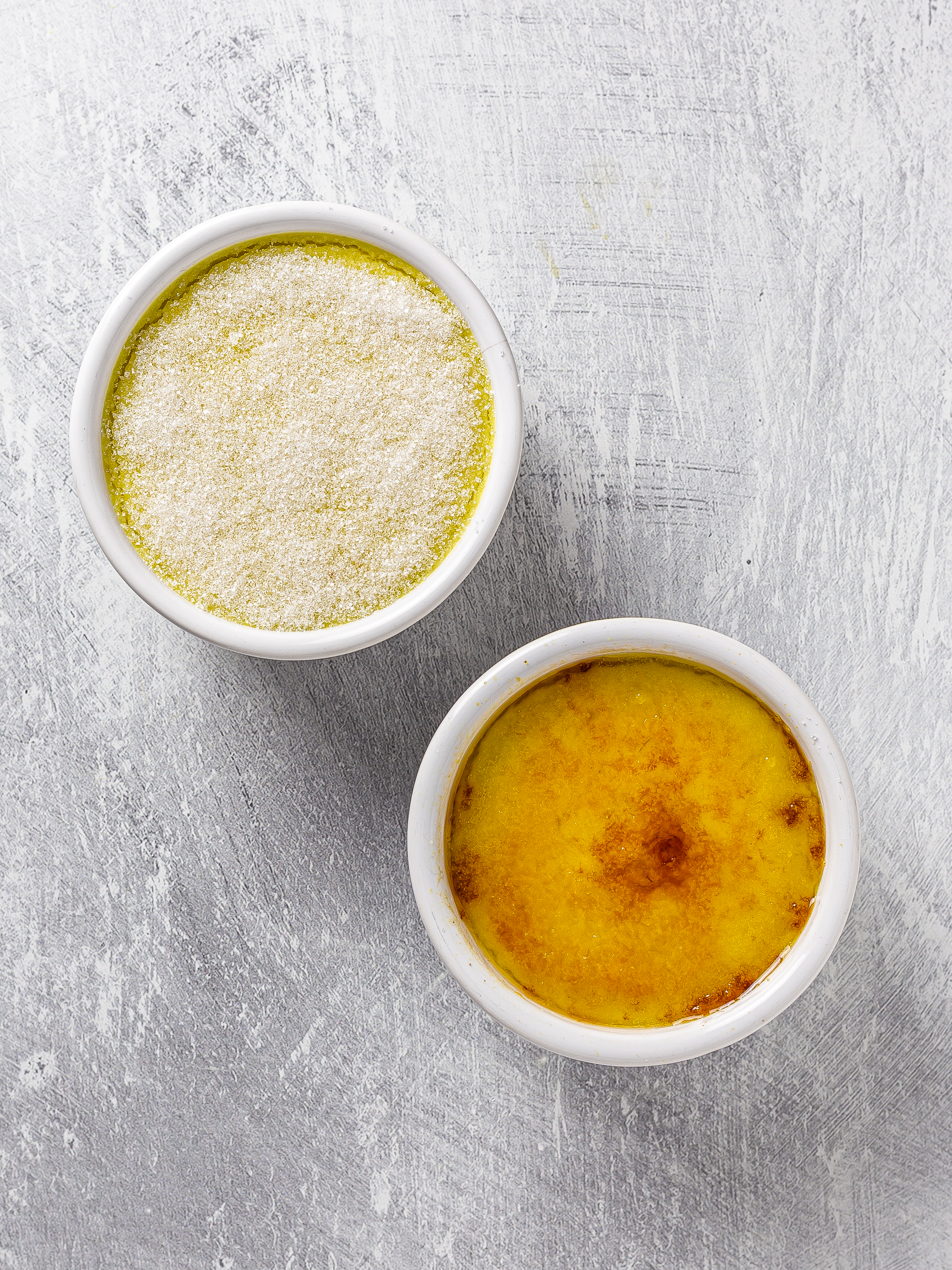
Tips
If the cream is too runny, add more starch while cooking it over the heat to help thicken even more.
If you place the coconut milk can in the fridge a few hours before, you'll have a perfect separation of the cream and water layers.
You can store this mango and coconut creme brûlée in the fridge for a couple of days or try to freeze it for a refreshing dessert.
